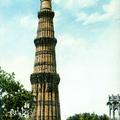1910-1919
Cashmere [House Boat]
A postcard printed in Great Britain, but with the unusual electrotype on the back "Post Restante," also known as "Post Restant" which means to hold the item at a post office until it is picked up by a traveler.
Srinagar. View from Tukht Hill.
Tukht Hill, better known as Takht-e-Suleiman hill, offers a wonderful view of the Srinagar. The famous Shankaracharya Temple, one of the oldest shrines in Kashmir valley, tops this hill and offers this view.
D. Macropolo & Co.
Lucknow. The Kaiser Bagh and Vinery Buildings.
Lucknow was the capital of the Kingdom of Awadh until 1858. Wajid Ali Shah, the king of Awadh, constructed the Kaiser Bagh Palaces of Lucknow in the 1840s and 1850s. Some 8 million rupees were spent on their construction.
Frere Hall
Frere Hall is a well-preserved monument of the British Raj. Built in memory of Sir Henry Bartle Edward Frere (1815-1884) who as an early Chief Commissioner of Sindh promoted economic and civic activities in the province.
Government House
The residence of the Chief Minister of Sindh in the heart of modern Karachi. This Sindhi power center is on the same road as major hotels, Frere Hall and the US Consulate.
Delhi. The Cross & Ball Church.
The Cross & Ball Church is known as the St. James Church of Old Delhi inside Kashmir Gate. It was built by James Skinner in 1836. It is said that Skinner was once badly wounded while serving the army. He vowed to build a church in case he survived.
Lahore. Wazur [Wazir] Khan's Mosque.
Shaikh Ilm-ud-din Ansari, known as Wazir Khan, built this mosque in the 17th century. Wazir Khan's mosque is in the heart of Lahore's walled inner city, surrounded by narrow lanes and crowded bazaars.
The view of Lahore from the minarets is fabulous
Armee Anglo Indienne - Campement d'Indiens
A striking portrait of individuals, young and old, who served in the British Indian army that fought in France during World War I. This card is postmarked 1915, and was used to "offer a handshake to a friend."
Kutub Minar, Delhi
Qutub Minar is among the tallest brick minarets in the world, an important early example of Indo-Islamic architecture built between 1199-1220 ACE. The Mexican writer Octavio Paz described it in his book In Light of India (1995):
"it is difficult to


![Cashmere [House Boat] Cashmere [House Boat]](https://www.paperjewels.org/sites/default/files/styles/square_thumbnail/public/slides/cashmere-boat.jpg?itok=aknYvE1L)
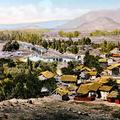
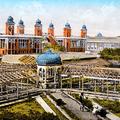
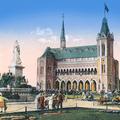
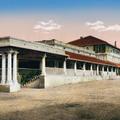

![Lahore. Wazur [Wazir] Khan's Mosque. Lahore. Wazur [Wazir] Khan's Mosque.](https://www.paperjewels.org/sites/default/files/styles/square_thumbnail/public/slides/lahore-mosque_0.jpg?itok=C1lMPCbl)

